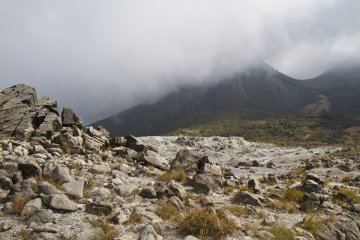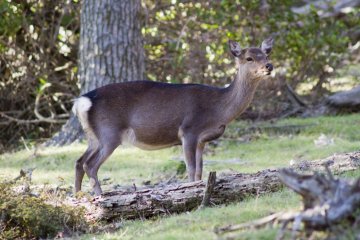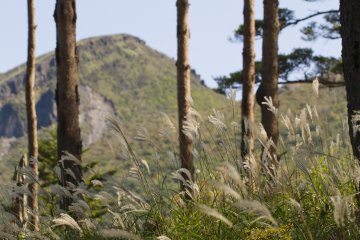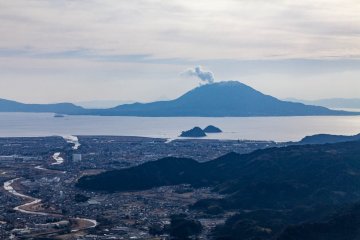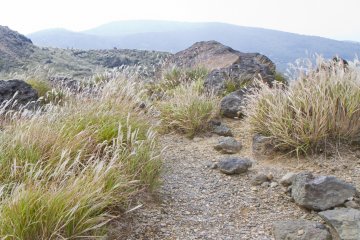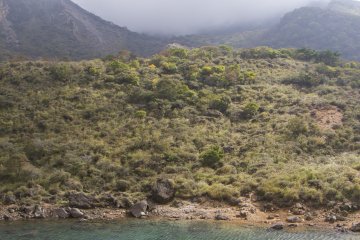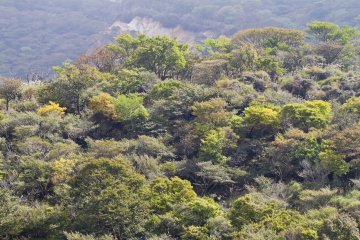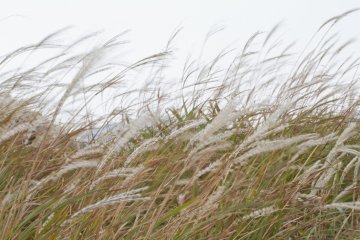As the trail moves past the burnt rocky landscape of Mt. Io, it opens up into a plain leading to the base of Mt. Karakuni and covered in dense tussocks of susuki (Miscanthus sinensis). Sometimes referred to as Japanese pampas grass in English, the distinguished inflorescence of this celebrated plant blooms in autumn and is so abundant as to dominate much of the Ebino Plateau. Although susuki tufts are normally whitish to brownish, look for some that are more the color of brownish red wine due to volcanic emissions. The Japanese word for shrimp, prawn, or lobster is ebi, and here the distinctively colored grass is renown enough to be the likely source of the plateau’s name.
すすきヶ原—susuki ga hara—Susuki Plain 硫黄山—iou-yama—Mt. Io 韓国岳—karakuni-dake—Mt. Karakuni



